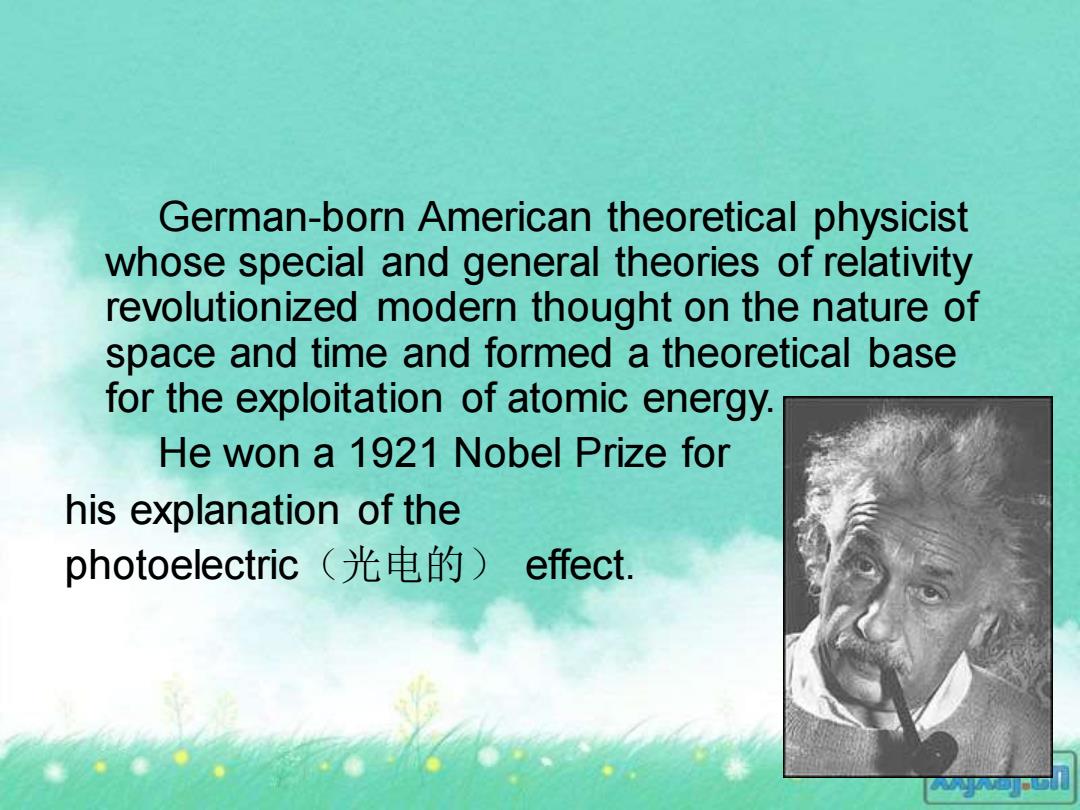
German-born American theoretical physicist whose special and general theories of relativity revolutionized modern thought on the nature of space and time and formed a theoretical base for the exploitation of atomic energy. He won a 1921 Nobel Prize for his explanation of the photoelectric(光电的)effect
German-born American theoretical physicist whose special and general theories of relativity revolutionized modern thought on the nature of space and time and formed a theoretical base for the exploitation of atomic energy. He won a 1921 Nobel Prize for his explanation of the photoelectric(光电的) effect
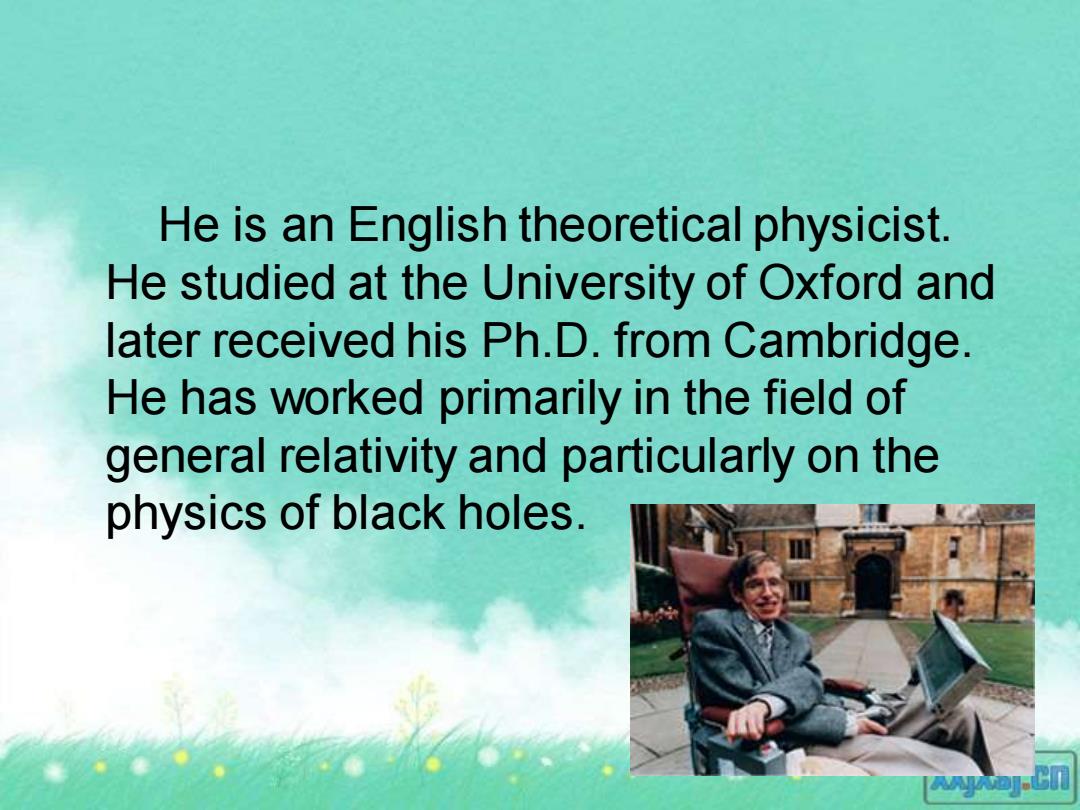
He is an English theoretical physicist. He studied at the University of Oxford and later received his Ph.D.from Cambridge. He has worked primarily in the field of general relativity and particularly on the physics of black holes
He is an English theoretical physicist. He studied at the University of Oxford and later received his Ph.D. from Cambridge. He has worked primarily in the field of general relativity and particularly on the physics of black holes
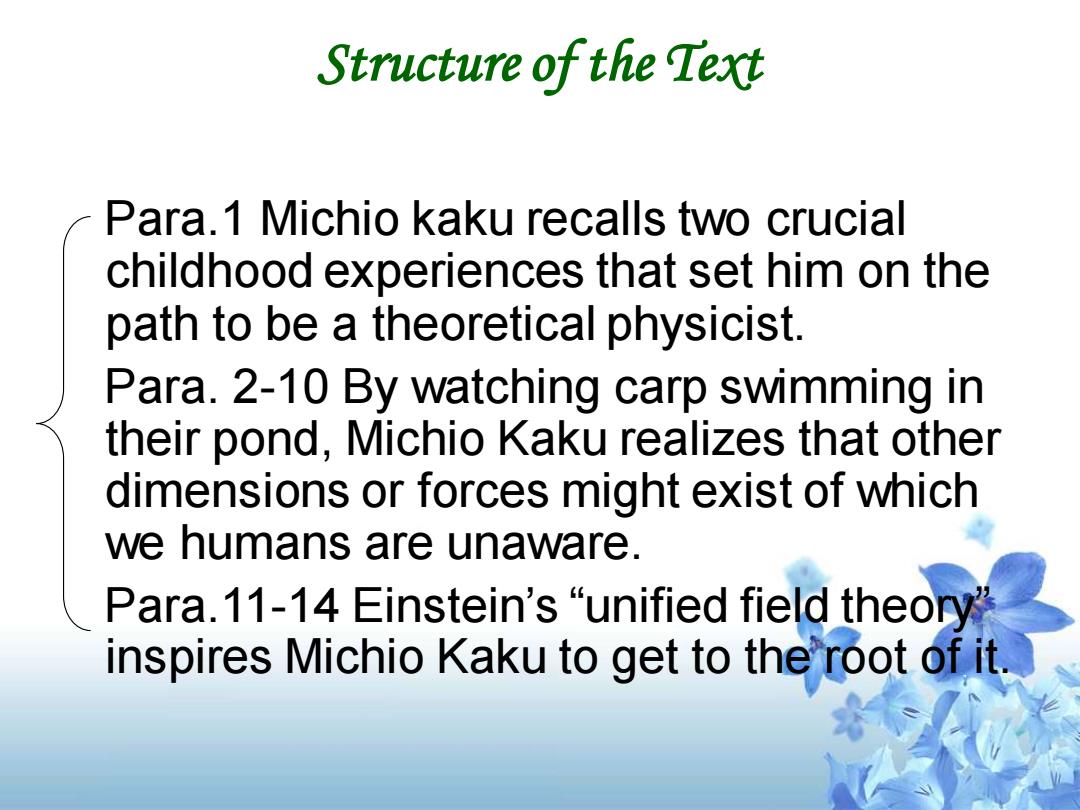
Structure of the Text Para.1 Michio kaku recalls two crucial childhood experiences that set him on the path to be a theoretical physicist. Para.2-10 By watching carp swimming in their pond,Michio Kaku realizes that other dimensions or forces might exist of which we humans are unaware. Para.11-14 Einstein's "unified field theory inspires Michio Kaku to get to the root of it
Structure of the Text Para.1 Michio kaku recalls two crucial childhood experiences that set him on the path to be a theoretical physicist. Para. 2-10 By watching carp swimming in their pond, Michio Kaku realizes that other dimensions or forces might exist of which we humans are unaware. Para.11-14 Einstein’s “unified field theory” inspires Michio Kaku to get to the root of it
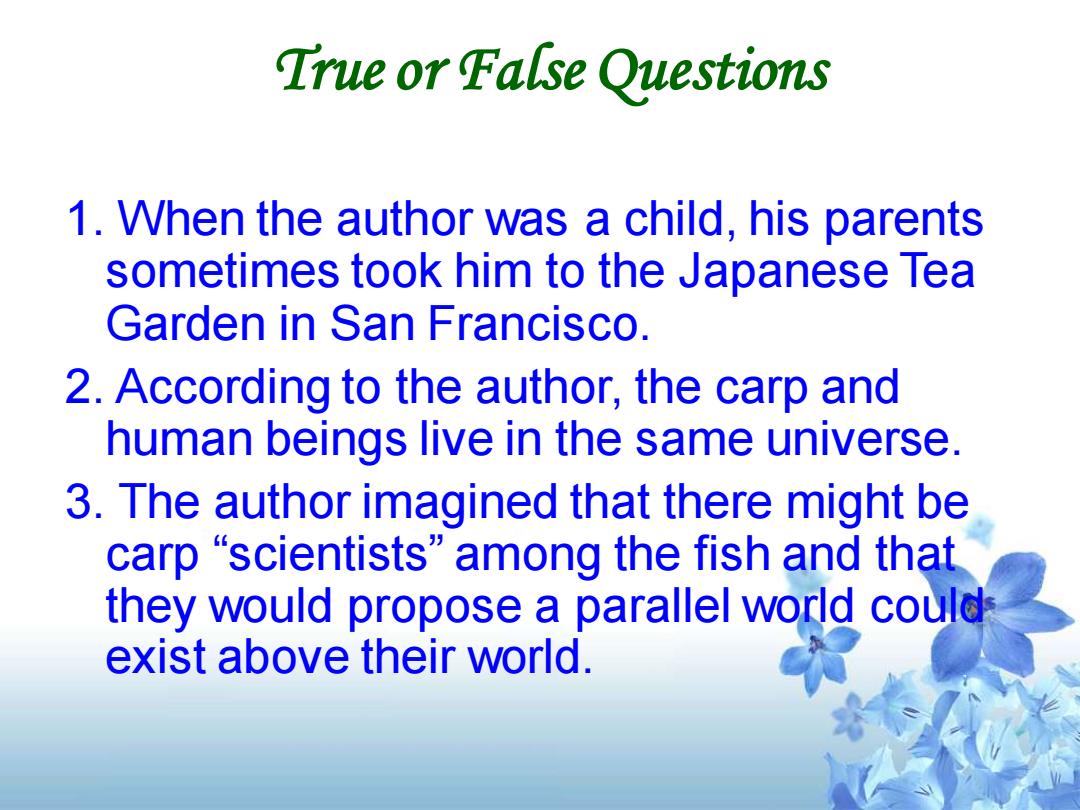
True or False Questions 1.When the author was a child,his parents sometimes took him to the Japanese Tea Garden in San Francisco. 2.According to the author,the carp and human beings live in the same universe. 3.The author imagined that there might be carp“scientists”among the fish and that they would propose a parallel world could exist above their world
True or False Questions 1. When the author was a child, his parents sometimes took him to the Japanese Tea Garden in San Francisco. 2. According to the author, the carp and human beings live in the same universe. 3. The author imagined that there might be carp “scientists” among the fish and that they would propose a parallel world could exist above their world
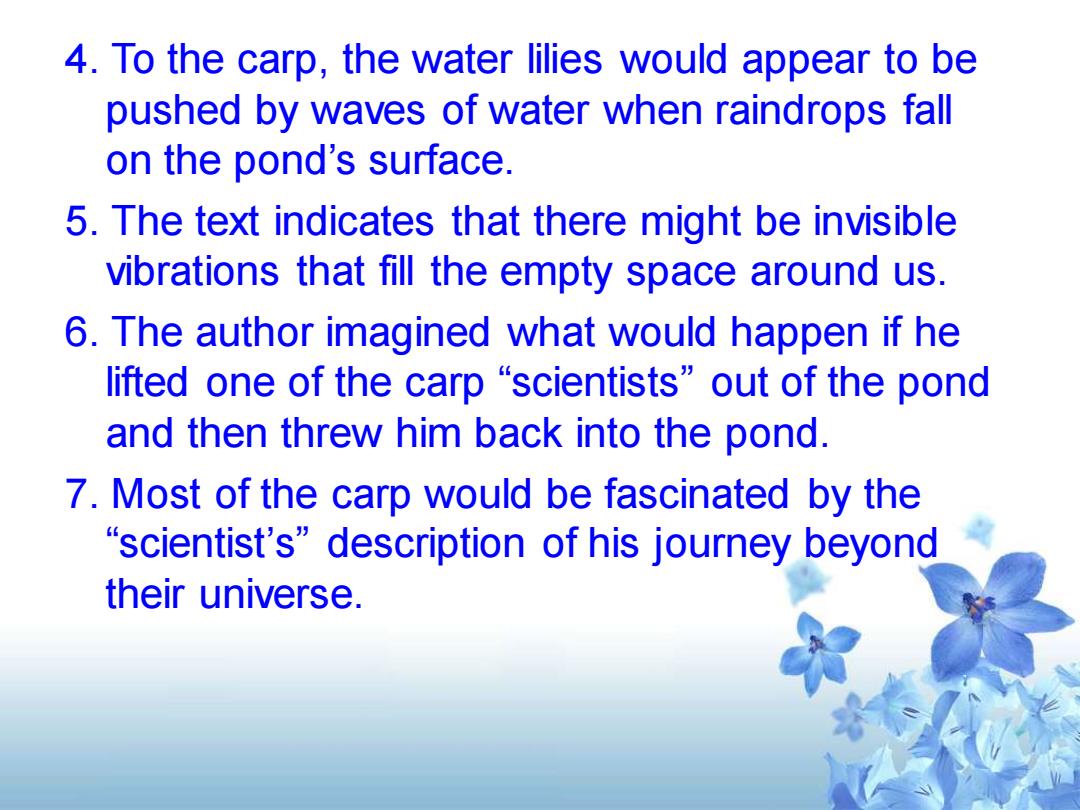
4.To the carp,the water lilies would appear to be pushed by waves of water when raindrops fall on the pond's surface. 5.The text indicates that there might be invisible vibrations that fill the empty space around us. 6.The author imagined what would happen if he lifted one of the carp "scientists"out of the pond and then threw him back into the pond. 7.Most of the carp would be fascinated by the "scientist's"description of his journey beyond their universe
4. To the carp, the water lilies would appear to be pushed by waves of water when raindrops fall on the pond’s surface. 5. The text indicates that there might be invisible vibrations that fill the empty space around us. 6. The author imagined what would happen if he lifted one of the carp “scientists” out of the pond and then threw him back into the pond. 7. Most of the carp would be fascinated by the “scientist’s” description of his journey beyond their universe